Chemical Blog Posts
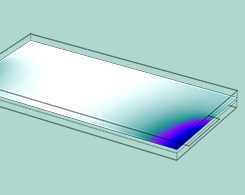
Evaluating the Electrode Utilization of a Lithium-Ion Battery Pouch Cell
Large-format batteries are found in energy storage systems; electric, hybrid, and plug-in cars; unmanned vehicles; light-rail trains; and more. We discuss modeling a component of these batteries.
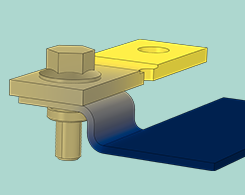
Protecting Against Atmospheric Corrosion with Simulation
Certain environmental factors, such as humidity and snow, can lead to atmospheric corrosion. The result? Rusty bikes, cars, and other metal structures. Simulation can protect against this effect.
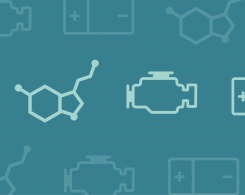
Digital Twins and Model-Based Battery Design
By combining high-fidelity multiphysics models with lightweight models and measured data, engineers can create digital twins to understand, predict, optimize, and control real-world systems.

Keynote Video: Simulating the Drying of Cellular Foods
How about them (dried) apples? Empa uses multiscale modeling to analyze the dehydration of soft cellular food products, such as dried fruit, and scale their processes for mass production.
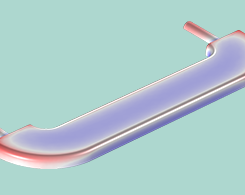
The Art and Science of Electrochemical Plating
Electrochemical plating, a surface finishing technique used in the automotive, electronics, corrosion protection, aerospace, and defense industries, is both an art and a science. Let us explain.

How to Model Ion-Exchange Membranes and Donnan Potentials
Get an introduction to the theory behind the Nernst-Planck-Poisson equations, Donnan potentials, and how to model ion-exchange membranes in batteries and fuel cells.
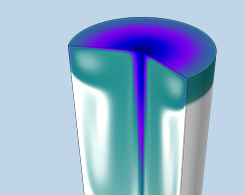
How to Model Sparging in COMSOL Multiphysics®
Sparging, the process of bubbling a gas into a liquid, is seen most notably in carbonation, such as for soda and seltzer water. This mass transfer process can be modeled in COMSOL Multiphysics®.

Optimizing Thermal Processes in Carbon Manufacturing with Simulation
A guest blogger from SGL Carbon GmbH demonstrates how his organization uses heat transfer simulation to optimize thermal processes in carbon manufacturing.
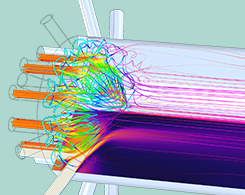
Modeling a Tubular Reactor for Optimized Polymer Manufacturing
Chemical engineers can model tubular reactors to optimize them for specific manufacturing and production processes, such as for the polymerization of polyester, as this example shows.

Analyzing Cyclic Voltammetry at a Microdisk Electrode with Simulation
What is cyclic voltammetry, and why is it important in the design of microdisk electrodes? We discuss all of this and more in this electrochemical engineering blog post.
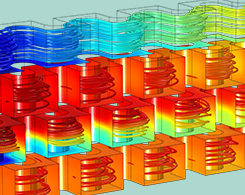
Analyzing Fine Chemical Production in Plate Reactors
Batch reactors, continuous reactors, plate reactors, oh my. Here, we discuss analyzing the fine chemical production process in a plate reactor using chemical modeling.

Modeling Copper Electrodeposition on a Circuit Board
Copper electrodeposition is used to manufacture PCBs. Here, we discuss modeling the electrodeposition of copper in the trench of a PCB.
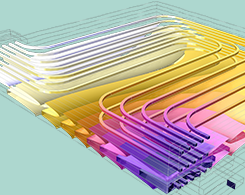
Fueling Up for Autonomous Driving with Optimized Battery Designs
What good are fully autonomous vehicles if they run on fuel? To develop hybrid and electric autonomous vehicles, we need to design efficient and optimized battery management systems.
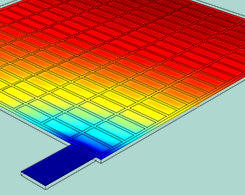
Analyzing the Current Distribution in a Lead-Acid Battery Design
The lead-acid battery in your car is not much different from the original one developed by Gaston Planté in 1859. 1 change is that you can now analyze the current distribution using simulation.

Multiphysics Modeling of Stress Corrosion in Underground Pipelines
Stress corrosion is a phenomenon that causes degradation in underground pipelines. Learn how to use multiphysics modeling to understand and predict its occurrence.

Keynote Video: Moving Beyond Simulation for Biopharma Applications
At Amgen, researchers build simulation applications for biopharmaceutical uses, such as researching biological and synthetic drugs. Learn more in this blog post featuring their keynote talk.
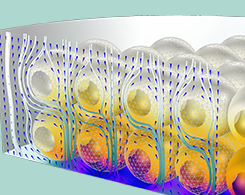
Modeling Adsorption at Surfaces in COMSOL Multiphysics®
What is adsorption? Learn the theory behind this chemical engineering phenomenon as well as how to model the process at surfaces in the COMSOL® software.
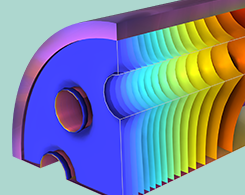
Evaluating the Performance of a Steam Reformer with Simulation
To design a steam reformer for hydrogen production, you need to couple mass, energy, and flow equations. The Chemical Reaction Engineering Module can account for this true multiphysics problem.
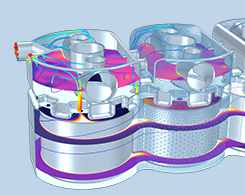
Calculating Thermodynamic Properties for Liquids and Gases
The Chemical Reaction Engineering Module includes a built-in database of over a dozen thermodynamic properties, making it easier to set up your transport and reaction models. Details here.
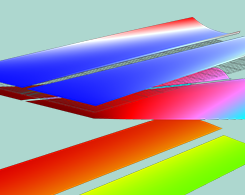
Advancing Vanadium Redox Flow Batteries with Modeling
The chemical energy in vanadium redox flow batteries is contained in liquid electrolytes and stored in external tanks. They can be used to improve grid energy storage and renewable energy.
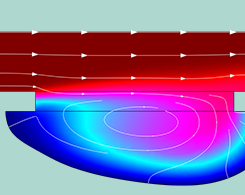
How to Model Wet Chemical Etching in COMSOL Multiphysics®
Wet chemical etching was one of Rembrandt’s favorite methods for creating self-portraits. Now, it’s used by engineers to produce integrated circuits, MEMS devices, and pressure sensors.
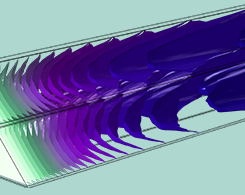
Modeling Surface Reactions in Porous Media and Reactive Pellet Beds
Reactive pellet beds have complex local geometries and undergo microscopic diffusion, but there is a way to simply and accurately simulate these devices in COMSOL Multiphysics®.
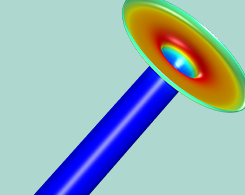
Pulsed Electrochemical Machining: A Multiphysics Model
Industries that manufacture metal parts are concerned with precision machining and quality of surface finish. Optimizing the pulsed electrochemical machining process can improve these factors.
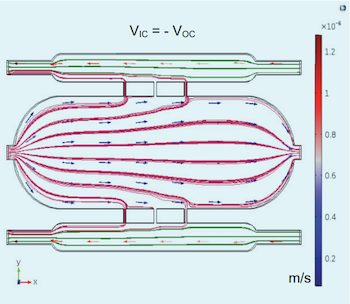
Simulating Cancer Cell Migration in Microgravity with COMSOL®
Researchers used multiphysics simulation to determine how microgravity effects the migration of metastatic cancer cells. Their results could have new implications for therapy and treatments.
